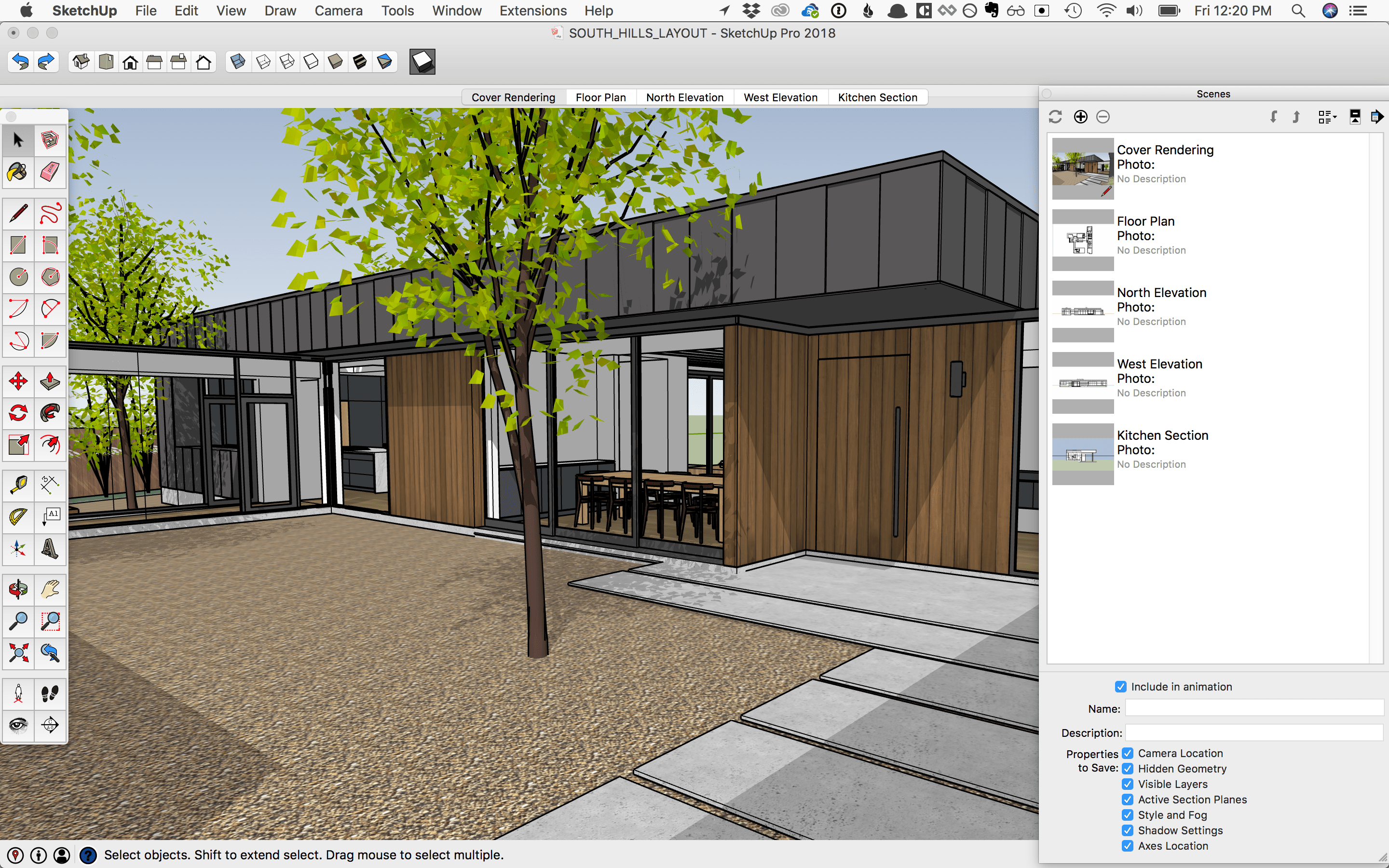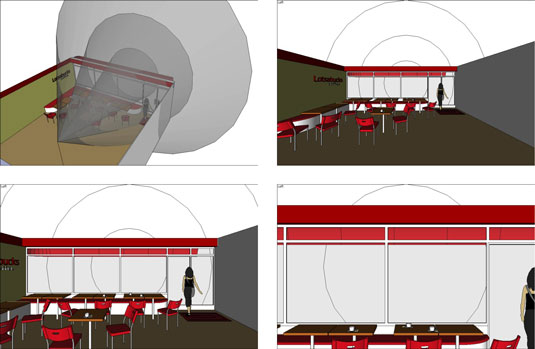

- #SKETCHUP VIEWS PDF#
- #SKETCHUP VIEWS FULL SIZE#
- #SKETCHUP VIEWS PRO#
- #SKETCHUP VIEWS SOFTWARE#
- #SKETCHUP VIEWS ISO#
I’ve been able to extend my teaching ability and the students are benefiting greatly. SketchUp has given me confidence in tackling more complex projects both at home and with my students in my course.
#SKETCHUP VIEWS FULL SIZE#
They can then print the project documents and full size templates at their local FedEx Office for the class.
#SKETCHUP VIEWS PDF#
"All the SketchUp models and the resulting LayOut documentation ( drawings and templates) I produce are exported to PDF and distributed via email to my students. Tim's use of SketchUp and LayOut has also become an essential part of his woodworking course curriculum: So it is saves me time, frustration, and materials.įrom one SketchUp model I can produce multiple orthographic views (front, side, top), assembled and exploded views, one or more views of different details, full-size templates and even cross-sections." The construction process is much more straightforward after having 'built' the piece as a 3D SketchUp model. The model inherently provides a much higher quality of design and documentation. "There are numerous advantages to having created a complete 3D SketchUp model first in the computer before moving to the shop.

Tim now takes advantage of 3D models produced with SketchUp to improve his workflow in the shop: He was also unable to extract any quantities or cut lists from his drawings. Exploded views, close-ups of joint details, full-size templates or any other custom view of the project could not be seen without creating another special drawing. Tim found that any type of pre-visualization of his projects was also time consuming. The 2D drawings that I took to the shop were often rough, introduced more errors and had to be sorted out in the shop resulting in unnecessary re-work before getting to the point of actual construction." Unfortunately, individual 2D drawing can be difficult to interpret and may not supply enough information – especially in the case of complex joinery.
#SKETCHUP VIEWS SOFTWARE#
"Before SketchUp and LayOut, I relied on 2D software and 2D drawings for my projects. He uses the software to resolve technical issues, communicate more effectively, and become a more productive woodworker in general.

Build blog, or instructing one of his many woodworking courses, Tim has incorporated SketchUp and LayOut into his work. Whether he's hands-on in his woodworking studio, contributing to the Fine Woodworking weekly Design. After retiring in 2005 from the Bechtel Corporation where he served for 36 years in the management of engineering and IT projects, Tim's focused much of his energy on his interest in the field of woodworking.
#SKETCHUP VIEWS PRO#
In the SketchUp Pro area of the Help Center, see Viewing a Model for more details about the standard views. Or select Camera > Standard Views Camera > Standard and, on the submenu that appears, select the view you want. To set one of these views, click a button in the toolbar at the top of the interface, as shown in the following figure.
#SKETCHUP VIEWS ISO#
You can set the camera at a standard view: Top, Bottom, Front, Back, Left, Right, or Iso (which stands for isometric). Simulates walking around inside the model. Simulates a fixed camera point that’s at an average person’s eye level. ToolĬlick and drag to pan left, right, up, or down.Ĭlick and drag to draw a box that defines the area you want to zoom in to.Ĭlick to show the entire model in the viewing area. For a more in-depth look at the Look Around and Walk tools, see Walking through a Model. You find details about orbiting, panning, and zooming in Viewing a Model. Tip: For more information about each tool, see the related article in the SketchUp Pro area of the Help Center.


 0 kommentar(er)
0 kommentar(er)
